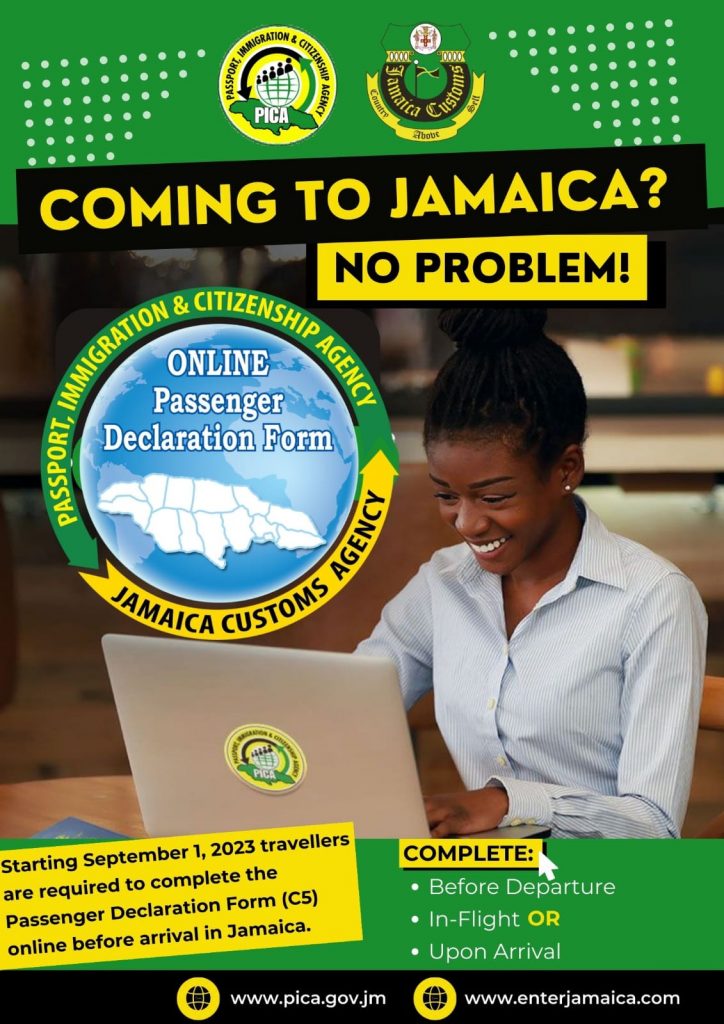Air Traffic Control
A service provided for the control of aircraft flight movements in areas of controlled airspace and aircraft ground movements. In Jamaica, Air Traffic Control is provided by the Jamaica Civil Aviation Authority.
Airline
An airline provides air transport services for passengers or freight.
Airport Code
A three character code which is the official designation of the airport. The Norman Manley International Airport code is [KIN]
Bilateral Agreements / Air Service Arrangements
A set of arrangements that regulate the operation of international air services between two countries. These arrangements usually comprise an agreement, any Memoranda of Understanding and any exchange of letters and/ or notes.
Bonded Warehouse
A warehouse in which goods subject to excise taxes or Customs duties are temporarily stored without taxes or duties being assessed. A bond or security is given for the payment of all taxes and duties that may eventually become due.
Cargo
Cargo is any property carried on an aircraft other than mail and baggage. Mail comprises closed bags handed over by the postal service, whatever their contents may be. Cargo does not include passenger baggage.
Carrier Code
Code assigned by the International Air Transport Association (IATA) and commonly used to identify a carrier.
Charter Flights/Services
See Non-scheduled flight.
City Pair
An air route between two pre-defined cities.
Civil Aviation
Civil aviation is one of two major categories of flying, representing all non-military aviation, both private and commercial.
Civil aviation includes two major categories:
- Scheduled air transport, including all passenger and cargo flights operating on regularly-scheduled routes; and
- General aviation (GA), including all other civil flights, private or commercial
Commercial Transport Operation
An air transport operation, scheduled or unscheduled, involving the transport of passengers, baggage, cargo or mail for remuneration or hire.
Connecting Passenger
A passenger who is transferring to (from) a flight from (to) another flight (different aircraft and flight number) with the same airline or with a code sharing airline.
Courier
A fast door-to-door air service for express delivery of documents or small packages.
Departure Date
The date the aircraft departed from subject airport.
Destination Point
The airport at which the flight terminates.
Departure To
The airport at which flight next stops after leaving from subject airport.
Destination Point
Airport at which flight terminates.
Diversion
The landing of an aircraft at an airport not included in the scheduled route as a result of malfunction or suspected malfunction, weather conditions, refueling needs etc.
Domestic Flight
A flight operated between points within boundaries of a country/state by an airline registered in that country.
Duty
The tax imposed by a Customs authority on imported merchandise.
Equipment
Type of aircraft used to operate flight, example A300, MDS3, 747.
Flight
The operation of an aircraft between two points, consisting of one or more flight legs, from leaving the airport of origin to arrival at the airport of final destination, and operated under one flight number.
Flight Number
A one to five character alpha-numeric code for a particular flight.
Flight Type
This is the classification highlighting whether the flight is scheduled or aviation operation; and international or domestic operation.
International Flight
A flight which lands (takes off) in Jamaica, from (to) a place outside Jamaica, or a flight which, being part of an air service to or from a place outside Jamaica, takes off from an aerodrome in Jamaica and lands at another aerodrome in Jamaica.
Scheduled Flight
A flight that is operated for remuneration and is based on a published timetable.
Non-Scheduled Flight
A flight that is operated for remuneration and is not based on a published timetable, but usually based on demand within particular seasons.
General Aviation Flight
A civil aviation operation other than Scheduled and Non-Scheduled commercial air transport operation; which, includes pilot training, business craft, private flights for leisure purposes and aerial works.
In-Flight Time
The total time from the moment an aircraft first moves under its own power for the purpose of taking off until the moment it comes to rest at the end of the flight.
Ferry Flight
A non-revenue flight made to position an aircraft for commercial or technical reasons, such as to provide transport for stranded passengers en-route, to return an empty aircraft used for a one-way charter flight, or an aircraft requiring major maintenance action at the operator’s home base.
Gateway
In international travel, the port where Customs and Immigration clearance takes place.
In Bond
The transportation or storage of goods in a condition or location which is exempt under the customs laws from the payment of customs duties for the time period which is allowed by law for transportation or storage.
Interline Agreement
An agreement allowed by regulatory authority which simplifies the ticketing process and prorates the fare among the carriers providing the services.
Interlining – carriage of passengers and/or freight by one airline on behalf of another airline, based on a formal agreement (an interline agreement) between air carriers which involves the coordination of baggage checks, carriage or air cargo, and the honouring of tickets between the airlines.
International Air Transport Association (IATA)
A regulatory organization of international air carriers that negotiates air fares, cargo rates, conditions of service, and ancillary matters on behalf of member airlines.
International Civil Aviation Organization (ICAO)
An agency of the United Nations, codifies the principles and techniques of international air navigation and fosters the planning and development of international air transport to ensure safe and
orderly growth. The ICAO Council adopts standards and recommended practices concerning air navigation, prevention of unlawful interference, and facilitation of border-crossing procedures for international civil aviation.
Dry Lease
The lease of aircraft only. The lessee provides its own crew or pilot. The lessee maintains control of the aircraft.
Wet Lease
The lease of aircraft including crew and other services as part of the lease agreement. The lessor maintains control of the aircraft.
Load Factor
The proportion of seating capacity of an aircraft which is actually used for a flight.
Dispatch of correspondence and other objects tendered by and intended for delivery to postal administrations, or goods carried under the terms of an international postal convention example, letter mail and air parcel.
Mail Off
Mail off-loaded from flight at subject airport.
Mail On
Mail loaded on to flight at subject airport.
Maximum Take Off Weight (MTOW)
Maximum permissible weight, specified in the certificate of airworthiness or other prescribed document, at which the aircraft may take off in the most favourable circumstances.
Movement
The landing or take off of an aircraft at subject airport.
Non-Revenue Passenger
An individual who is defined as any passenger who is two years old or younger.
Nonscheduled Flight
A flight that is operated not based on a published timetable but usually based on demand within particular seasons and unlike scheduled flights are usually given (in the Jamaican case) permits to operate for short periods, example charters.
‘Open Skies’ Agreement
An agreement to remove restrictions on the ability of airlines to operate services between two countries.
Passengers
Any person, excepting members of crew operating that flight, that is carried or to be carried on flight, with the consent of the carrier.
Commercial Passengers
Revenue and non-revenue passengers arriving or departing via commercial aircraft on a scheduled or non-scheduled flight.
Connecting Passenger
A passenger who is transferring to (from) a flight from (to) another flight (a different aircraft and flight number) with the same airline or with a code sharing airline.
Domestic Passenger
A passenger who has their point of origin and final destination between airports (or aerodromes) located within the same country or territory.
International Passenger Embarked
A passenger who boarded flight at the subject airport and who has as his/her final destination an international location.
International Passenger Landed
A passenger who has the subject airport as his/her final destination, and an international location as his/her initial point of travel (Point of Origin).
Intransit or Direct Transit Passengers
Passengers who arrive at a designated airport on a flight and who will be continuing their journey on an aircraft with the same flight number.
Point of Origin
The airport from which the flight started or originated.
Registration Number
The number marking the entry of civil aviation aircraft into the register established and maintained by the responsible civil aviation authority of contracting state in accordance with its applicable laws and regulation.
Runway End Safety Area (RESA)
An area symmetrically about the extended runway centerline and adjacent to the end of the strip primarily intended to reduce the risk of danger to an aeroplane undershooting or overrunning the runway.
RIGHTS – Commercial Aviation
The Freedoms of the air are a set of commercial aviation rights granting a country’s airline(s) the privilege to enter and land in another country’s airspace.
First Freedom
The right to fly over a country without landing.
Fifth Freedom Rights
The right to carry passengers from one’s own country to a second country and from that country to a third country.
Two sub-categories exist:
Beyond Fifth Freedom allows a carrier the right to carry passengers from one country to another country and then, beyond, to the third country. Intermediate Fifth Freedom allows the right to carry passengers from the third to the second country.
Stopover Rights
The right of a carrier from one country to carry its own international passengers between two points within another country.
Scheduled Departure and Arrival Times
The time that an aircraft is scheduled for takeoff from the origin airport, or landing at the destination airport, as set forth in published schedules.
Scheduled Flight
A flight which is operated, for remuneration and is based on a published time table, or so regular or irregular as to constitute a recognizably systematic series, which are open to direct booking by the public.
Scheduled Time
The time the aircraft was originally tabled to land at or take off from subject airport.


